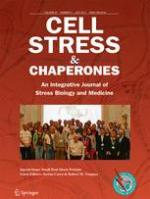Citation:

Date Published:
2017Abstract:
Heatstroke is associated with systemic inflammatory response syndrome, leading to multiple organ dysfunction and death. Currently, there is no specific treatment decreasing hyperthermia-induced inflammatory/hemostatic derangements. Emerging studies indicate that histones leaking from damaged cells into the extracellular space are toxic, pro-inflammatory, and pro-thrombotic. We therefore hypothesize that serum histones (sHs) are elevated during heatstroke and are associated with the severity of the disease. Sixteen dogs with heatstroke and seven healthy controls were included in the study. Median serum histones (sHs) upon admission in dogs with heatstroke were significantly higher (P = 0.043) compared to that in seven controls (13.2 vs. 7.3 ng/mL, respectively). sHs level was significantly higher among non-survivors and among dogs with severe hemostatic derangement (P = 0.049, median 21.4 ng/mL vs. median 8.16 ng/mL and P = 0.038, 19.0 vs. 7.0 ng/mL, respectively). There were significant positive correlation between sHs and urea (r = 0.8, P = 0.02); total CO2 (r = 0.661, P = 0.05); CK (r = 0.678, P = 0.04); and prothrombin time (PT) 12 h post presentation (r = 0.888, P = 0.04). The significant positive correlation between sHs and other heatstroke severity biomarkers, and significant increase among severely affected dogs, implies its role in inflammation/oxidation/coagulation during heatstroke. sHs, unlike other prognostic and severity biomarkers in heatstroke, can be pharmacologically manipulated, offering a potential therapeutic target.

